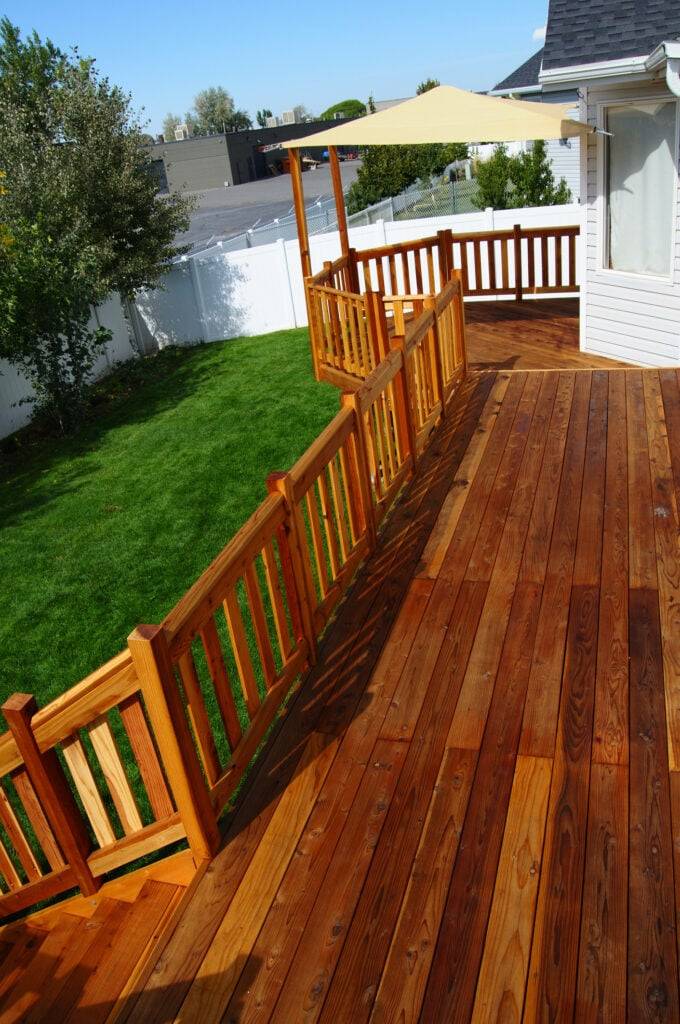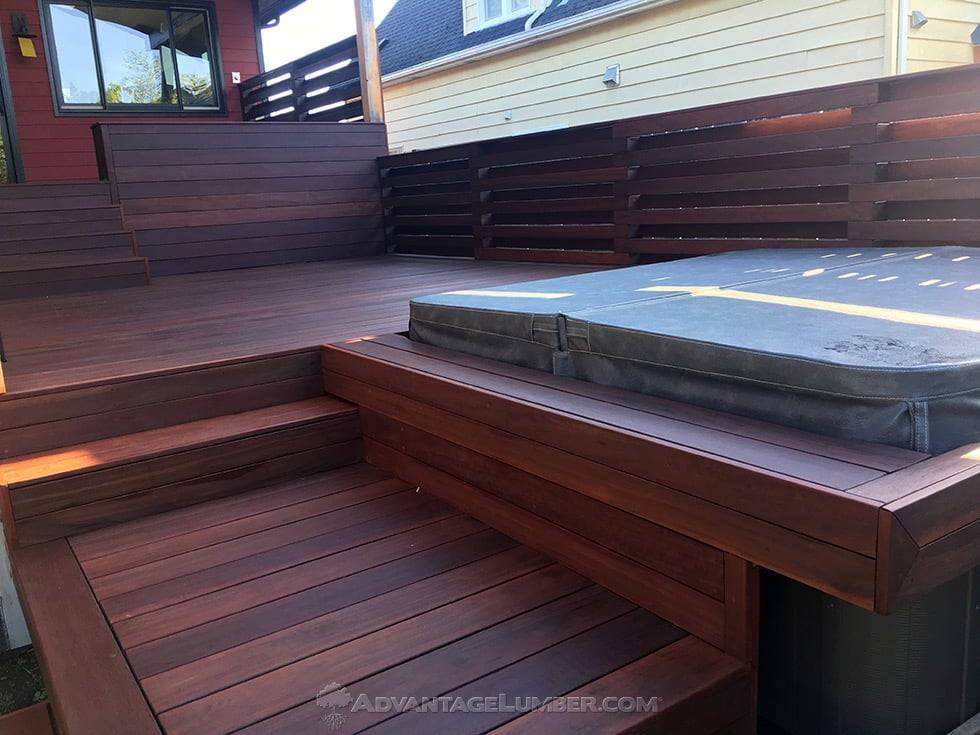Welcome to our comprehensive guide on Redwood Lumber and Brazilian Redwood. In this article, we’ll explore the various characteristics, advantages, and drawbacks of these two popular wood species.
By the end, you’ll have a clearer understanding of which is best for your specific needs, considering factors such as maintenance, durability, and lifespan.
Redwood Lumber: Pros and Cons

Pros of Redwood Lumber
- Durability: Redwood lumber is renowned for its resistance to rot and insect infestation, ensuring a long lifespan when adequately cared for.
- Aesthetics: Its rich, vibrant hue can complement various architectural styles, adding warmth and charm to any setting.
- Workability: This wood is relatively easy to work with, making it a favorite among craftsmen and DIY enthusiasts alike.
Cons of Redwood Lumber
- Price: Redwood is typically more expensive than many other types of wood due to its limited growing region and scarcity. Simply put it primarily grows on the west coast so availability is limited throughout the US. Shipping to the east coast will increase the price of Redwood.
- Maintenance: Although durable, redwood requires regular sealing and staining to maintain its aesthetic appeal and resist weathering.
- New Growth Material: Most of the Redwood you’ll find available these days is harvested from managed plantations. It’s not the old growth wood that gave Redwood it’s reputation. The old growth redwood was superior in terms of beauty and durability.
- Environmental Impact: The logging of redwood trees, especially old growth, has environmental implications due to their status as a slow-growing species.
- Grading Variations: There are many grades of Redwood and many contain knots and sapwood which are less desirable and less durable. Buying “Clear All Heart” is a premium grade that does not contain any sapwood or knots and will typically cost you significantly more money.
Brazilian Redwood: Pros and Cons
Pros of Brazilian Redwood
- Exceptional Durability: Brazilian Redwood, also known as Massaranduba, is incredibly dense and highly resistant to insects, rot, and even fire.
- Aesthetically Pleasing: Brazilian Redwood boasts a distinctive, deep red color that can lend an exotic and elegant feel to your project.
- Sustainability: When sourced responsibly, Brazilian Redwood can be a more environmentally-friendly choice as it grows quicker than its Californian cousin.
- Price: As of 2023 Brazilian Redwood can be 30-40% cheaper when compared to the “All Heart” grade Redwood which would be a similar grade comparison to our Brazilian Redwood.
- Less Maintenance: The wood does not need a water sealer to protect it from rotting. If you like the grey look you can let the wood patina and have a very low maintenance deck.
Cons of Brazilian Redwood
- Hardness: While its hardness contributes to its durability, it also makes Brazilian Redwood more challenging to work with, you must pre-drill all your screw holes.
- Maintenance: Brazilian Redwood needs regular maintenance such as oiling to keep its color from fading over time. The oil will eventually fade and you roll more on. There’s no peeling or flaking of finishes to deal with.
Maintenance and Lifespan: Redwood Lumber vs. Brazilian Redwood
Both Redwood Lumber and Brazilian Redwood require some maintenance. Redwood needs a water sealer to help prolong and protect the wood from decaying faster since it still is a softwood.
Brazilian Redwood however does not require a water sealer to prolong it’s lifespan. If you did nothing to the wood it would simply turn grey and would last for many years. If you wish to maintain the color you simply apply Ipe oil. The oil help maintain the rich color and it eventually fades and you roll on more when needed.
When it comes to lifespan, both species are known for their longevity. Redwood Lumber, when properly maintained, can last up to 30 years or more. Brazilian Redwood’s superior density and resistance to rot allow it to last even longer, with many structures surpassing the 50-year mark.
In conclusion, while both Redwood Lumber and Brazilian Redwood offer their unique set of benefits, your choice ultimately depends on your project needs, budget, and personal aesthetic preference.
Brazilian Redwood is superior in almost all aspects.
